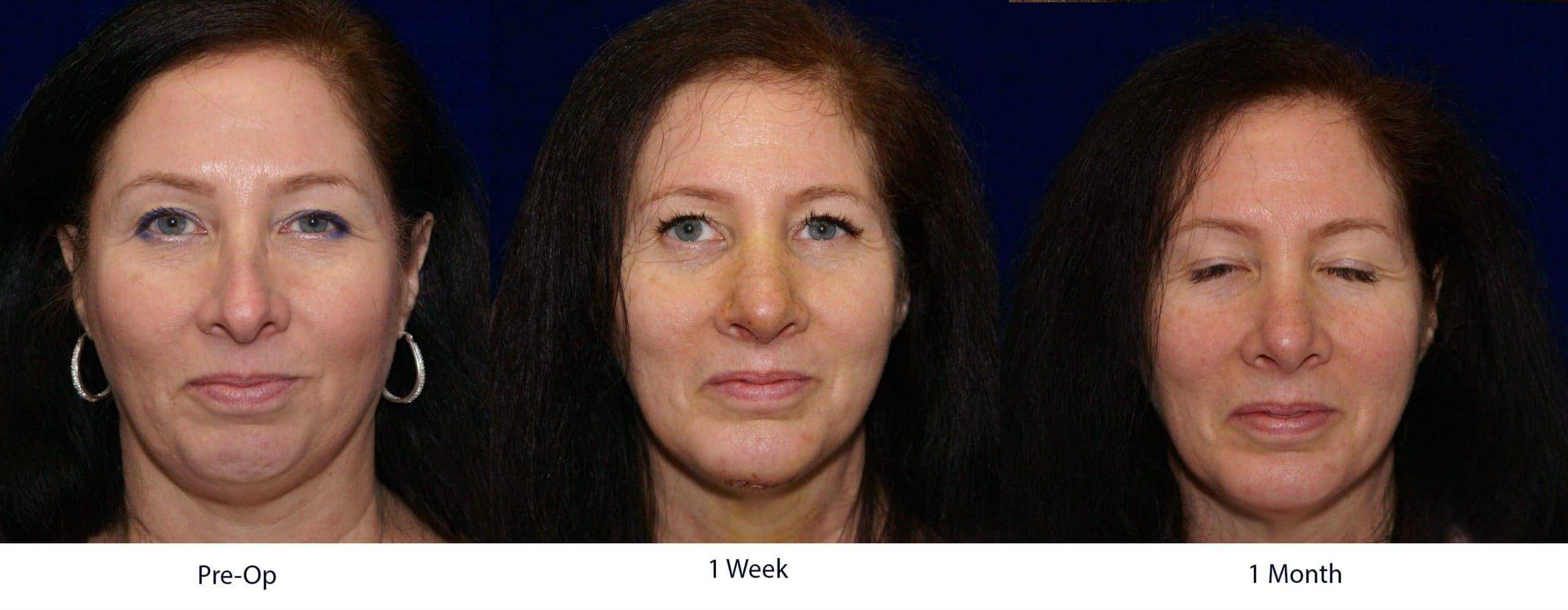How Long does it Take to Heal From a Rhinoplasty
Healing after any facial cosmetic or facial plastic surgery can be stressful. We all want to look and feel our best as fast as possible. Whether it is a facelift, filler or a Rhinoplasty (Nose Job) in Ottawa, we all want healing to be smooth and quick. The reality is, we can only heal as quickly as our body allows us. This is not intended to say that the surgeon’s experience and technique are not important— they are— but our individual healing ability also plays an important role in healing from a rhinoplasty.
Having a surgeon with the skills and advanced training in Rhinoplasty can help reduce the time it takes to heal and get you looking and feeling your best as quickly as possible.
After becoming both an Otolaryngologist and a Facial Plastic and Cosmetic Surgeon, I have the pleasure of treating both breathing issues in the nose as well as cosmetic issues. I see a lot of people with a wide variety of problems with the nose. In addition, I have completed and published research looking to improve patient outcomes after nasal surgery. This experience allows me to provide some good guidelines with respect to the typical patient and what you can expect after a rhinoplasty.
The purpose of this article is to help rhinoplasty patients in Ottawa understand the healing process of a rhinoplasty so you will have a better idea what to expect after your surgery. Havig a rhinoplasty can seem like a frightening process, but it doesn’t have to be!
What will I look like after a Rhinoplasty?
I like the break down the healing process of a Rhinoplasty into three phases:
Phase 1 – I look like I had surgery phase.
For the first week, you will have some small bandages on your nose as well as a small cast. You may also have some bruising. After seven to10 days, a nurse and/or I will take the cast and little bandages off of your nose. The nose will likely look good at this point, but the swelling will make it look a bit different and it may have some strange looking lumps and bumps. This is all normal and is simply due to the swelling around the bandages and cast.
Phase 2 – My nose isn’t perfect, but I look back to normal.
In most patients, by 10 to14 days, they have no fear of going out in public as the signs of surgery are, for the most part, resolved and gone away. Usually by two or threeweeks patients feel better and look more confident. This doesn’t mean the healing process is over, only the early phase of healing. (See two pictures)


Phase 3 – My nose looks great, but is still a little swollen.
This is the most frustrating phase. Your nose will look great, but not perfect. This phase can last up to 12 months after surgery. It is usually evident by a tip of the nose that looks ‘round’ as opposed to more defined. The key to this phase is patience. Time will improve the slight swelling.
Pain After a Rhinoplasty
Many people are worried about pain after a nose job. In my experience, the vast majority of people (80-90%) report little to mild pain. In fact, only 20% of my Ottawa rhinoplasty patients take prescription pain medication longer than two days. I realize this sounds surprising, but this is very common. Some people experience more pain, but the vast majority report little pain. I have done research looking at post-operative care of nasal surgery and nasal packing is often the most painful part of the surgery. My research has demonstrated that nasal packing is not required and therefore I do not use it. I believe this helps to considerably reduce the pain people experience after a rhinoplasty. In the last five years, I have used packing in less than 1% of people. Not using nasal packing along with good surgical technique can help reduce the potential for pain after a rhinoplasty
Nasal Congestion and a Stuffy Nose after a Rhinoplasty
Although pain is not a major concern in most people, nasal obstruction or nasal congestion can be. This means, for about two to three weeks after surgery, you may have a mild or even complete loss of the ability to breathe through your nose. I tell patients that this is often the worst part of the procedure. This happens because the swelling in your nose causes everything to narrow. The small stiches deep inside your nose can get dry and mucus will stick to them and narrow the passages even more. Finally, there are microscopic hairs inside the tissue in your nose. The purpose of these hairs is to keep things healthy and moist. After surgery, these hairs may temporarily stop working. This can lead to a dry feeling in the nose or even the opposite— a runny nose as the hairs can not move the mucus to the back of the nose. This can result in trouble breathing.
I typically ask people to use some antibiotic ointment and saline rinses to help limit these side effects, but the reality is, after surgery you will swell and the swelling will narrow your nose. 80% of my patients report normal breathing by two weeks. Of the 20% who do not report normal breathing, the vast majority will return to normal by one month.
Bruising after a Rhinoplasty
Bruising is another concern associated with rhinoplasty, but not everyone will bruise after a nose job Bruising usually occurs after you cut the bone around the nose. If you do not need the bone cut, you usually will have less bruising. However, if you desire a bump to be removed from your nose, you will likely get some bruising. This often is gone by 10 to14 days after surgery. (See images below).
Acne After a Rhinoplasty
When we do a rhinoplasty, we often use small little bandages that look like strips of tape. These help keep the nose protected and reduce some early swelling. The problem is, it can block pores on your nose and cause an acne breakout. If this is the case, our team will help treat the problem. This can however, take two to three weeks to be resolved. Almost everyone has a little redness around their nose because of the tape, but only about five to 10% will have a significant breakout requiring treatment. Talk to Dr Bonaparte if you are at risk for acne breakouts so you can help reduce this risk before surgery.
Swelling after a Rhinoplasty
Perhaps the most frustrating part of a rhinoplasty is the swelling that occurs after surgery. Usually at oneweek post-operative from a rhinoplasty, the swelling is mild. We often take your cast off and the nose looks good. However, the next week, people often see MORE swelling, particularly in the tip of the nose. Most people look very good by three to four weeks, but the swelling in the tip is almost always still present. I notice that most patients’ swelling peaks at one to two months. At this point, the tip looks a bit rounder than you would like, but still looks ‘normal.’ (See image below) It is important to understand this is a normal part of healing. I then find that it takes another four to six months for about 70% of the swelling to fully resolve, followed by an additional four to sixmonths for the remaining 30% of the swelling to go down. Usually, the swelling dissipates by 12-14 months after your rhinoplasty. Now remember, this is swelling at the tip of your nose. Usually things look great, but the final result is often hidden by some of this swelling. This is often the hardest part of the surgery: waiting for the swelling to go away.
Scarring after a Rhinoplasty
All patients who have an open rhinoplasty have a small scar on the outside of the nose and all patients will have a small scar on the inside of their nose. In the last 5 years, however, I have never had a patient require a revision or treatment of this scar. The rhinoplasty scars usually heal well and are difficult to see by two months.
Bleeding after a Rhinoplasty
Many patients are concerned about bleeding after a rhinoplasty. Mild, light bleeding that lasts one to three days is very common and is not a concern. It is very rare for patients to experience serious bleeding requiring treatment. In my practice, this is less than 1%. The good news, even if you do experience bleeding, it rarely changes the appearance of your nose if treated properly.
When can I exercise after a Rhinoplasty?
I often tell people to wait three to four weeks for heavy or strenuous exercise. The risk is that you can get a very bad nose bleed. It is best to be safe and wait for one month after your surgery. Light activity is OK after two weeks.
In Summary, healing after a rhinoplasty is usually much better than people think. Often, the biggest frustrations associated with rhinoplasty surgery are breathing and swelling at the tip of the nose. Preparing for this and understanding that swelling will occur will help you feel better about your nose and the healing process. Nevertheless, most patients feel and look great by two or three months.
Get the best rhinoplasty in Ottawa with the experienced staff at JB Cosmetics.
Categories:
- Blepharoplasty
- Botox
- Cost
- Dermatology
- Digital IMaging
- DLM FAQ
- Earlobe Repair
- facelift
- Facial Plastic Surgery
- Fillers
- Forehead Lift
- Healing Time
- In the News
- Injectables
- IPL
- Lasers
- Male Plastic Surgery
- Microdermabrasion
- Microneedling
- Non-Surgical
- Opinion
- Others
- Platelet Rich Plasma
- Research Review
- Rhinoplasty
- Skin Care
- Skin Tightening
- Specials
- Uncategorized
Choose Category
- Blepharoplasty
- Botox
- Cost
- Dermatology
- Digital IMaging
- DLM FAQ
- Earlobe Repair
- facelift
- Facial Plastic Surgery
- Fillers
- Forehead Lift
- Healing Time
- In the News
- Injectables
- IPL
- Lasers
- Male Plastic Surgery
- Microdermabrasion
- Microneedling
- Non-Surgical
- Opinion
- Others
- Platelet Rich Plasma
- Research Review
- Rhinoplasty
- Skin Care
- Skin Tightening
- Specials
- Uncategorized


